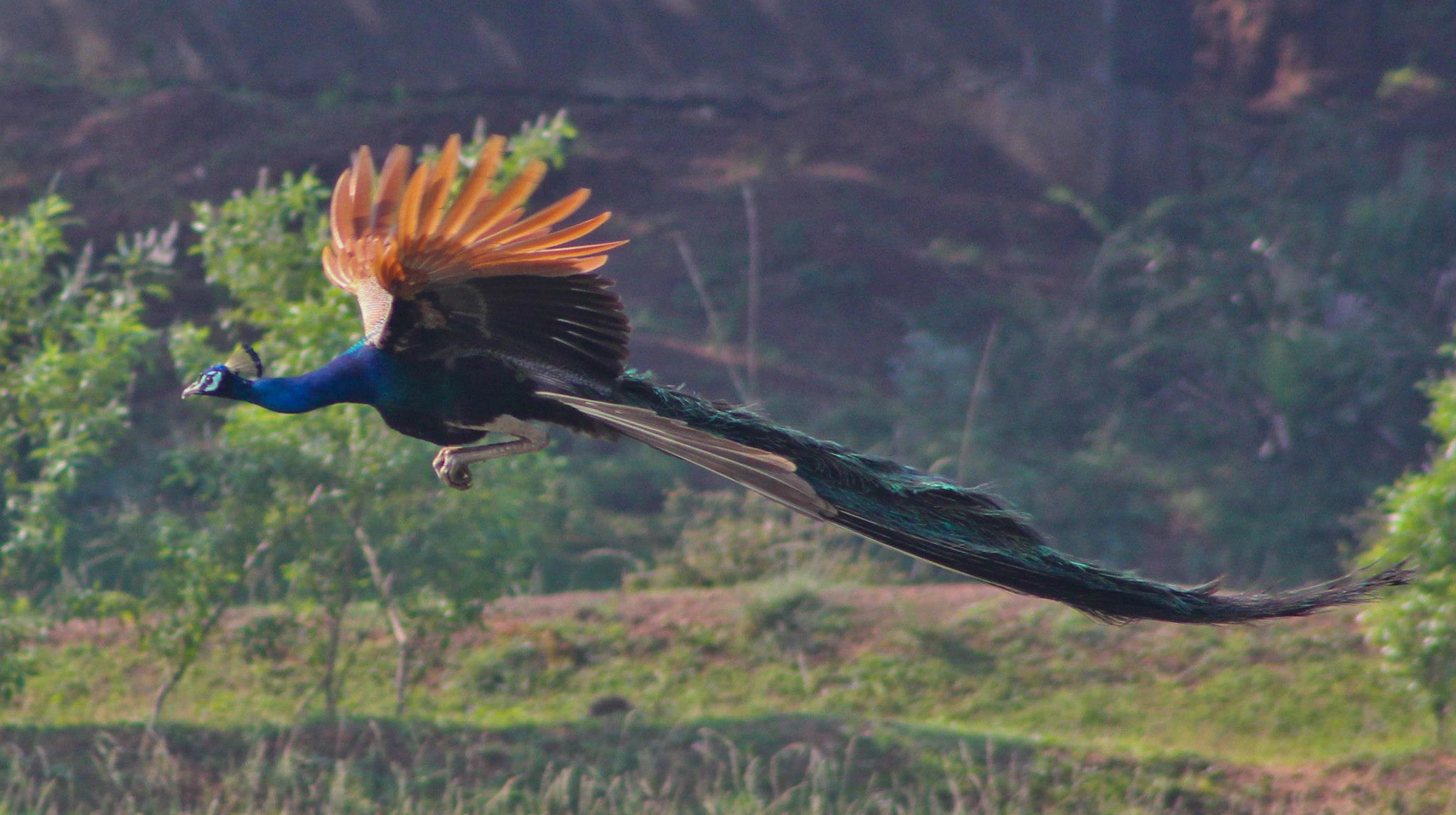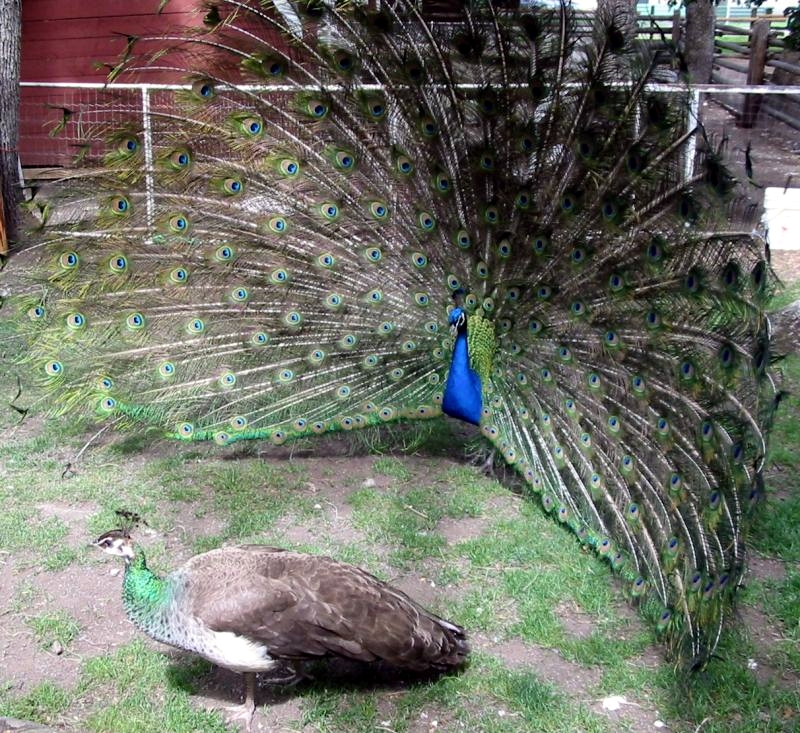Runaway Sexual Selection
according to RA Fisher (1930)
On the assumption that sexual
preferences are heritable, RA
Fisher (1930) argued that selection for exaggerated
secondary male ornamentation is coupled with selection
for exaggerated female sexual preference for the ornament.
This produces positive reciprocal feedback
such that more exaggerated males and more choosy females
will be produced in successive generations. There is runaway selection for still
further exaggeration of both the ornament and
the preference, until the cost of the ornament
and (or) the limitations of choice outweighs there
reproductive benefit. The cost of ornamentation in males is
assumed to be the typical limit, as it is males that display
the extremes of ornamentation in sexually dimorphic species.
The classic example is the tail display of the male Indian
Peafowl (Pavo cristatus) [below], which has a
high 'cost' in terms of developmental, flight energy,
and exposure to visual predators. Seeking an explanation for
it by his theory of Natural Selection, Charles Darwin in 1860
wrote to Asa Gray, "The
sight of a feather in a peacock’s tail, whenever I gaze at
it, makes me sick." However, Fisher
presented an explanation:
"[If] we consider that
the tastes of organisms … be regarded as the products of
evolutionary change, governed by the relative advantage
which such tastes may confer. Whenever appreciable
differences exist in a species … there will be a tendency to
select also those individuals of the opposite sex which most
clearly discriminate the difference to be observed, and
which most decidedly prefer the more advantageous type.
[I]n a species in which
the preferences of … the female, have a great influence on
the number of offspring left by individual males. ... [ornamental]
development will proceed, so long as the disadvantage is
more than counterbalanced by the advantage in sexual
selection … there will also be a net advantage in favour of
giving to it a more decided preference.
The two characteristics
affected by such a process, namely ornamental
development in the male, and sexual preference
for such development in the female, must thus
advance together, and … will advance with ever increasing
speed. [I]t is easy to see that the speed of
development will be proportional to the development already
attained, which will therefore increase with time
exponentially, or in a geometric progression.... Such a
process must soon run against some check. Two such are
obvious. If carried far enough … counter-selection in favour
of less ornamented males will be encountered to balance the
advantage of sexual preference; … elaboration and … female
preference will be brought to a standstill, and a condition
of relative stability will be attained. It will be more
effective still if the disadvantage to the males of their
sexual ornaments so diminishes their numbers surviving,
relative to the females, as to cut at the root of the
process, by demising the reproductive advantage to be
conferred by female preference."
Fisher RA (1930). The
Genetical Theory of Natural Selection.
Oxford Univ Press; reprinted by Dover.
Peacock in Flight [By
Servophbabu - Previously published:
https://www.facebook.com/photo.php?fbid=549409641739213&set=a.523320851014759.131395.100000105472880&type=3&theater,
CC BY-SA 3.0,
https://commons.wikimedia.org/w/index.php?curid=22719490].

